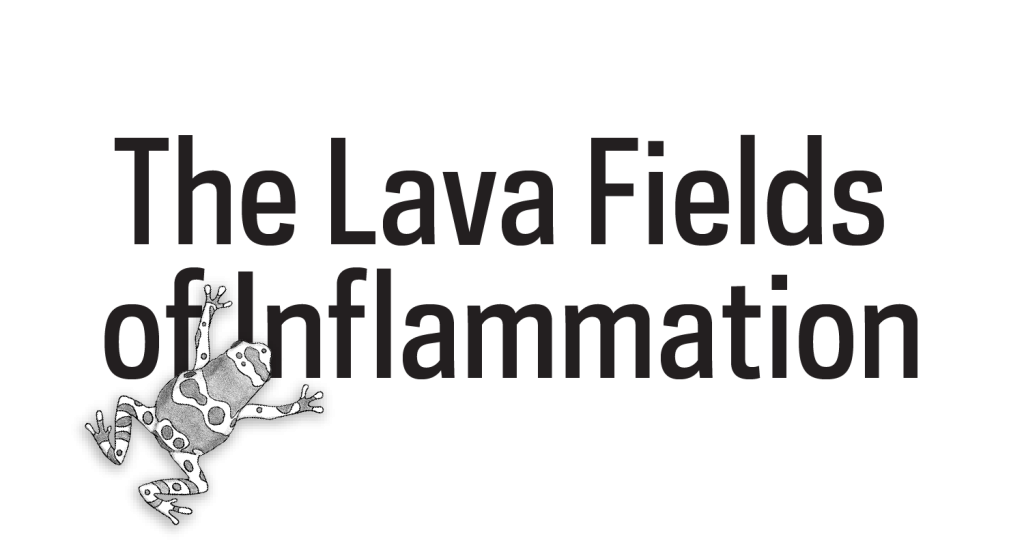
Raging rivers of fire represent sites of infection and injury, where heroes battle invaders and heal the land.
Where fire meets healing, a battle unfolds.
Here, deep within the body, immune cells rush to the site of infection like first responders racing through lava. They’re not just fighting off invaders—they’re rebuilding the terrain. These glowing rivers and fiery landscapes aren’t just signs of danger—they’re the body’s way of saving itself.
Try This: Can you spot the defenders? The flames? The ruins turning into new ground? This is what healing looks like up close.

Invading my Space: Cancerous lung cells (Credits: Dr. Deborah Gumucio & Dr. Kate Walton)
Brown cells gathered at the bottom of this image represent lung adenocarcinoma – the most common type of non-small-cell lung cancer, especially in non-smokers – as it invades the healthy tissue above. The brown stain highlights a protein called TTF1, which helps diagnose this type of cancer. While normal lung cells show only light staining, the cancer cells appear heavily marked, revealing the aggressive spread of the tumor. Understanding this process helps researchers detect and treat early lung cancers more effectively.

Retinal Regenerator: Zebrafish eye cells (Credit: Dr. Xiaofeng Zhao)
This image shows the eye of a zebrafish, a species known for its remarkable ability to regenerate damaged retinal cells. The rod-shaped Müller glia cells seen here play a key role in that repair process, dividing to replace damaged neurons — an ability humans largely lack. By studying this healing process in zebrafish, scientists hope to discover ways to protect or restore human vision.

Building a wall: Protective gut cells (Credit: Dr. Kathleen Ignatoski)
These gut epithelial cells form a critical barrier between the body and its environment. The protein seen here in green (Ankyrin-G) helps keep these cells tightly connected, like mortar between bricks. These tight joins are strong enough to keep out harmful bacteria — like those that can cause life-threatening inflammation in the colon — while porous enough to allow helpful nutrients that aid in digestion and metabolism. Understanding how this wall functions can improve treatments for gut-related diseases and infections.

Prometheus Regenerated: Mouse liver (Credit: Dr. Teresa Patitucci)
A lacework of blood vessels in this mouse liver reveals the organ’s hidden “plumbing.” The liver’s hundreds of jobs (filtering out toxins, producing proteins, and storing energy) depend on this intricate network. Mapping it helps explain how the liver regenerates after injury and maintains its essential roles in the body.

Fire Up: Developing brain cells (Credit: Dr. Ra Kohen)
Grown in a 3D matrix, these young brain cells extend red projections to explore their surroundings and move their yellow-stained cell bodies across the space to build circuits. Proper movement builds healthy pathways for thinking, feeling, and action. However, disruptions in migration have been linked to psychiatric disorders like schizophrenia and bipolar disorder. Understanding how these cells move may help uncover new paths for treatment.